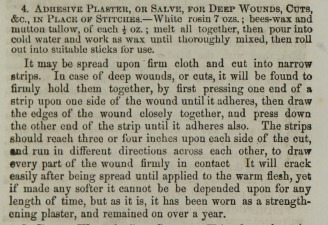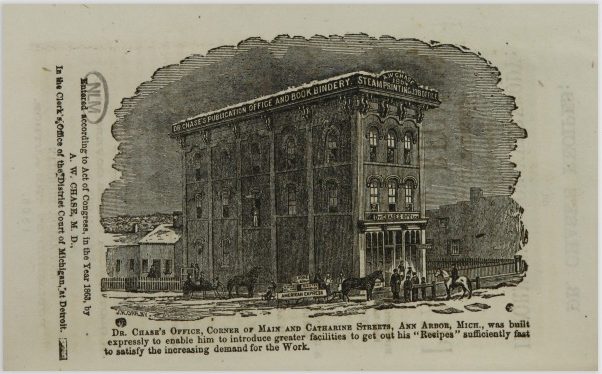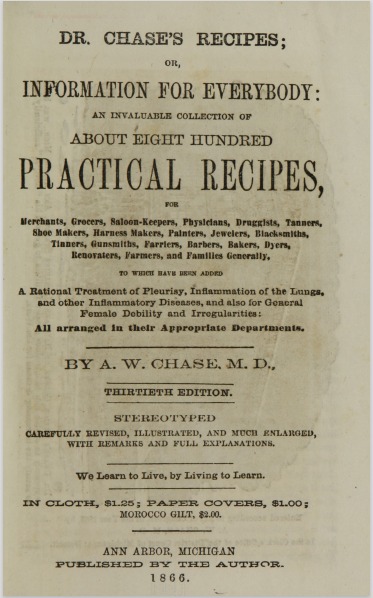Recipe for a ‘Tallow Plaster’ from Dr. Chase’s Recipe’s; published in 1866. This is a recipe for what we now would call ‘butterfly stitches; although somewhat more substantial.
“Adhesive Plaster or Salve for Deep Wounds, Cuts etc. In Place of Stitches”

- White rosin 7 ozs
- Bees-wax 1/2 oz
- Mutton tallow 1/2 oz
“Melt all together, then pour into cold water and work as wax until thoroughly mixed. Then roll out into suitable sticks for use.
It may be spread upon firm cloth and cut into narrow strips. In case of deep wounds, or cuts it will be found to firmly hold them together. By first pressing one end of a strip upon one side of the wound until it adheres, then draw the edges of the wound closely together and press down the other end of the strip until it adheres also.

The strip should reach three or four inches upon each side of the cut. Then run in different directions across each other, to draw every part of the wound firmly in contact. It will crack easily after being spread until applied to the warm flesh. Yet if made any softer it cannot be depended upon for any length of time. But as it is, it has been worn as a strengthening plaster, and remained on over a year.“
Notes (Ours)
Ingredients
- White Rosin is another name for Colophony (Pine Resin), it is a sticky, gummy residue that is left over from making pine needle oil. It has excellent antiseptic and expectorant properties. Modern day usage includes it being used in the manufacture of glues. It should be noted that some people can be allergic to Colophony (Rosin) when it comes into contact with the skin.
- Bees-wax is inert with a high plasticity. It has anti-inflammatory, anti-bacterial and anti-viral properties. These qualities offer the perfect balance of nourishment to calm the skin, keep it clear and bacteria free, heal wounds and fight infection.
- Tallow is antimicrobial, antifungal and anti-inflammatory. It is particularly healing for rashes and other inflammatory skin conditions as well as cuts and scrapes. The combination of properties may be able to ward off infections.
Will Tallow Plasters Work?
I haven’t actually tried them but I am going to. They most definitely should work. They can be made to any size required and will be more substantial than modern ‘butterfly plasters’.
Why Will Tallow Plasters Work?
- ‘White Rosin’ will most definitely ensure that the plasters actually adhere, coupled with it’s antiseptic properties adds to the plasters ability to reduce the risk of infection in the wound.
- The plasticity of the Bees-wax will give the Rosin flexibility, especially when warmed by the body temperature of the skin.
- The combination of the properties of the three ingredients mean that you have virtually every ‘anti’ that you need to fight against infection and aid healing in a wound.
- All three ingredients have an indefinite ‘shelf-life’ and have in themselves preservative actions.
